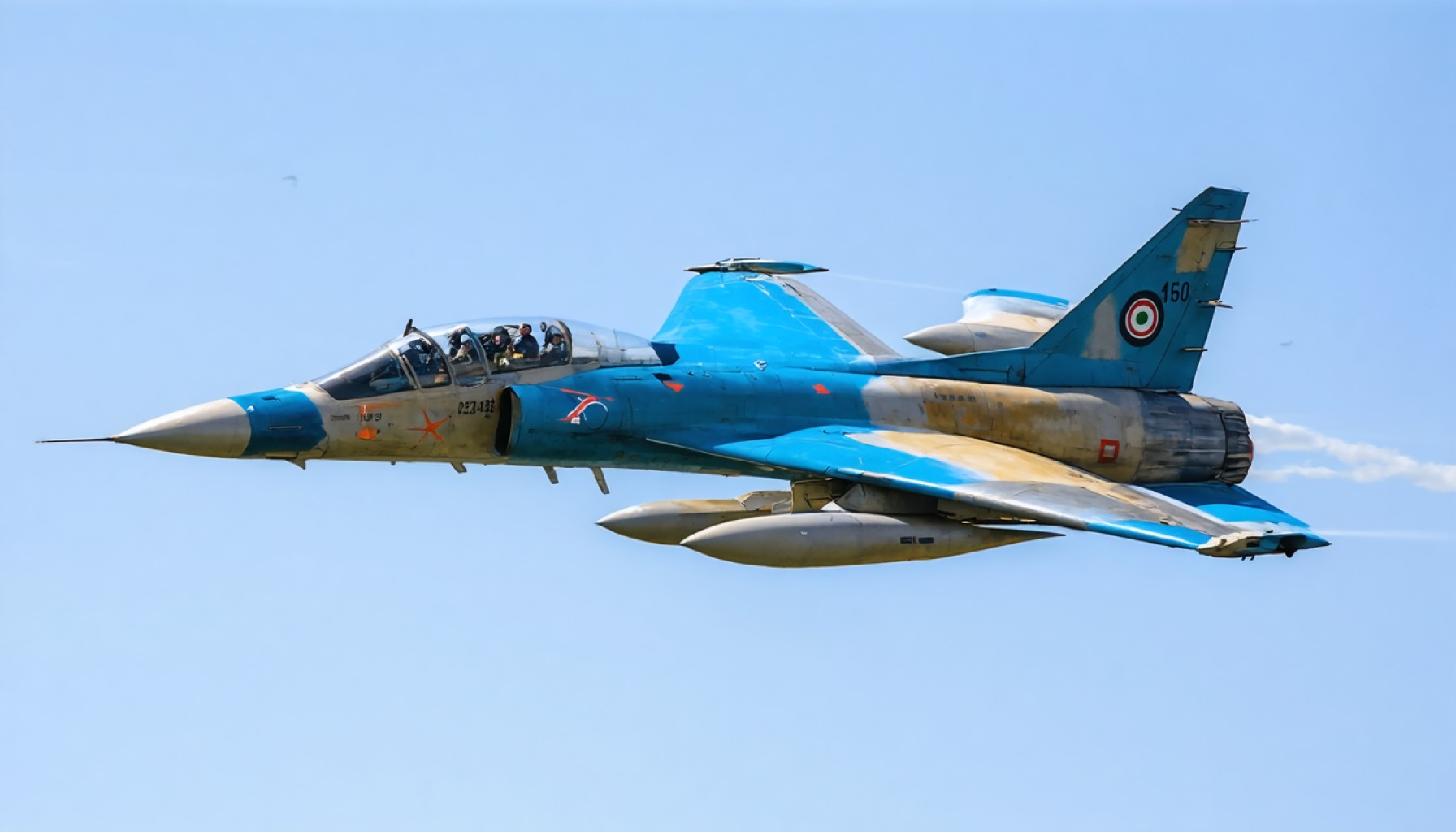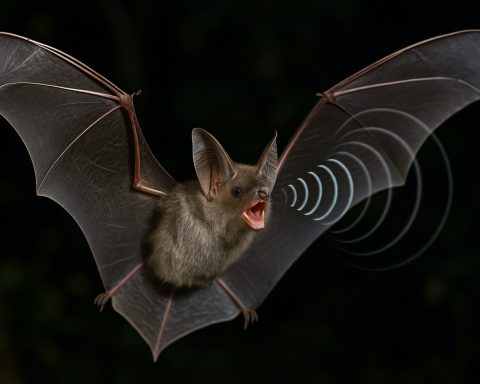- The Mirage 2000D RMV officially enters operational service, marking a pivotal upgrade for the French Air and Space Force.
- This modernization initiative transforms 50 Mirage 2000D airframes, enhancing their strategic and tactical viability.
- The $530 million project highlights French innovation amid fiscal and geopolitical challenges, ensuring the fleet’s longevity.
- Key upgrades include multifunction displays, advanced MICA IR missiles, TALIOS targeting pod, and Link-16 data capability.
- The RMV’s transformation addresses global tensions, providing versatile, cost-effective air power to support NATO and other missions.
- The program sets a precedent for allies with aging fleets, offering a sustainable model of revamping military assets.
- France’s strategic perseverance enhances its military presence while reaffirming its role as a NATO ally and defense innovator.
The skies above Nancy-Ochey Air Base will soon witness a defining moment for the French Air and Space Force. As the Mirage 2000D RMV officially enters operational service, this event not only celebrates a vintage aircraft’s transformation but also encapsulates France’s tactical and strategic resolve. The ambitious modernization project that concludes with this ceremony signifies more than just updated avionics; it represents a strategic lifeline to an aging fleet—and an enduring testament to French ingenuity in the face of fiscal constraints.
Launched in 2016, the RMV program rejuvenates 50 Mirage 2000D airframes originally destined for conventional strike roles. This overhaul, valued at a robust $530 million, veered through geopolitical and budgetary turbulence—ultimately transforming the Mirage into a formidable, multi-role asset. At its heart lies a complex engineering endeavor that goes beyond mere refitting. Dassault Aviation, in partnership with Thales, crafted a logistical masterpiece that overcame pandemic-related disruptions and global supply chain hurdles.
At its core, the modified Mirage 2000D is a bold fusion of analog beginnings and digital aspirations. The aircraft now features a cockpit equipped with multifunction displays, shedding its traditional gauges for agile, digital sophistication. It sports advanced MICA IR missiles for self-defense and boasts the TALIOS targeting pod, a French creation that provides uncompromising clarity even in hostile weather. The addition of Link-16 data capability elevates the aircraft to an interconnected warrior, bringing it up to par with modern network-centric doctrines.
This metamorphosis doesn’t emerge in a vacuum; it responds to a world where geopolitical tensions simmer. France’s recent support for Ukraine, marked by the transfer of Mirage 2000-5s, underscores a steadfast commitment to reinforcement, tailored deftly by the RMV upgrade. From African counter-insurgency campaigns to potential NATO theaters, the Mirage 2000D RMV promises versatility and lethality without the hefty price tag of newer models like the F-35.
Yet, the narrative doesn’t end with technological enhancement. The RMV program offers a blueprint for allies with similar dilemmas. Nations reliant on dated fleets may find solace in emulating this French resolve—reinvigorating their air power economically and effectively.
While its digital conversion delights young pilots and challenges veterans, the RMV’s evolution remains a dynamic story of adaptation. Each sortie tells of determination, from the first successful cannon firing proudly reported by Opex360 to exercises testing new systems under extreme conditions.
In a realm where military priorities continuously evolve, the Mirage 2000D RMV reveals France’s deft navigation of practicalities over prestige. The arduous journey from concept to combat readiness does more than extend an aircraft’s life; it weaves a richer narrative of strategic perseverance, reaffirming France’s position as both a NATO ally and a sovereign defense innovator. Through this achievement, France not only extends the life of its vintage fleet but also offers its allies a tangible path forward—one rooted in pragmatism, innovation, and unwavering commitment to maintaining a robust military presence amidst global uncertainties.
Revolutionary Upgrade: Transforming France’s Vintage Mirage 2000D into a Modern Military Marvel
Exploring the Impact of the Mirage 2000D RMV Program
The modernization of France’s Mirage 2000D fighter aircraft under the RMV (Rénovation Mi-Vie) program serves as a compelling study of military innovation. This overhaul breathes new life into the legacy aircraft, making it a potent force in the face of current global threats. Here, we delve deeper into the factual underpinnings and implications of this modernization effort.
Key Features and Technological Upgrades
1. Advanced Avionics Transformation: The Mirage 2000D RMV is now equipped with multifunction displays, replacing outdated analog systems. This ensures pilots have real-time, comprehensive data.
2. Enhanced Weaponry: Incorporating MICA IR missiles elevates the aircraft’s defensive and offensive capabilities. These missiles are renowned for their high performance in air-to-air and surface-to-air scenarios.
3. TALIOS Targeting Pod: TALIOS, a French innovation, provides superior targeting accuracy, enhancing operations even under challenging weather conditions.
4. Network-Centric Integration: The introduction of Link-16 data capability situates the Mirage 2000D within a modern framework of network-centric warfare, allowing seamless connectivity with allied forces.
Practical Applications and Strategic Importance
– Geopolitical Adaptability: Given France’s varied military involvements, from African counter-insurgency operations to potential NATO engagements, the Mirage 2000D RMV offers versatility without the financial burden of procuring new aircraft like the F-35.
– Economic Efficient Alternative: The program exemplifies cost-effective modernization, offering a model to countries facing fiscal constraints but requiring enhanced combat capabilities.
Existing Challenges and Limitations
– Aging Framework: Despite upgrades, the Mirage 2000D remains an aging platform, which may pose maintenance challenges compared to newer models.
– Pilot Adaptation: Transitioning from analog to digital systems might pose a learning curve for veterans habituated to traditional interfaces.
Industry Trends and Future Forecasts
1. Increased Modernization Initiatives: Globally, we are likely to see a continued trend toward modernizing existing military assets as a cost-effective alternative to developing entirely new systems.
2. Collaborative Defense Strategies: The RMV program may encourage more international collaborations for shared technological advancements and military readiness.
Actionable Recommendations for Military Planners
– Emulate France’s Success: Countries with similar aging aviation fleets should consider adopting France’s modernization strategies for a balance of cost and capability.
– Invest in Training: Prioritize pilot training programs to smoothly transition from analog to digital systems and fully leverage new technologies.
Pressing Questions Answered
– Why retain an older aircraft model rather than replace it?: Economic factors coupled with strategic efficacy drive the decision to modernize rather than replace, allowing substantial capability improvements without incurring significant costs associated with new aircraft procurement.
– How does the RMV program align with global military modernization trends?: It exemplifies a strategic shift towards enhancing existing military assets, demonstrating fiscal prudence while achieving substantial upgrades in combat capabilities.
For further insights on evolving military trends and strategic defense innovations, visit Dassault Aviation.
In conclusion, the RMV program not only revitalizes France’s Mirage 2000D fleet but also sets a precedent for strategic, cost-conscious innovations in military aviation, reflecting a pragmatic approach to maintaining robust defense capabilities amidst global uncertainties.







